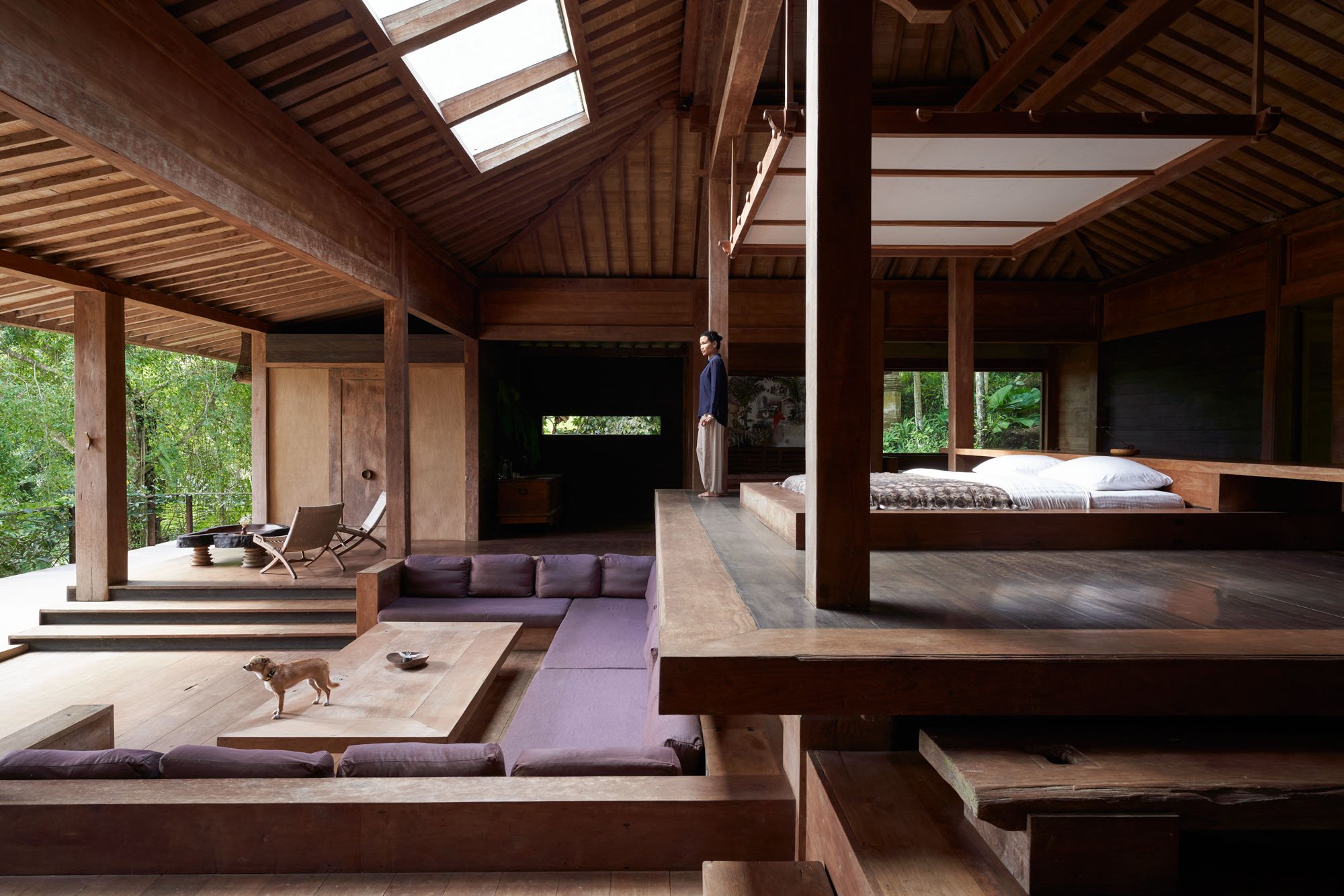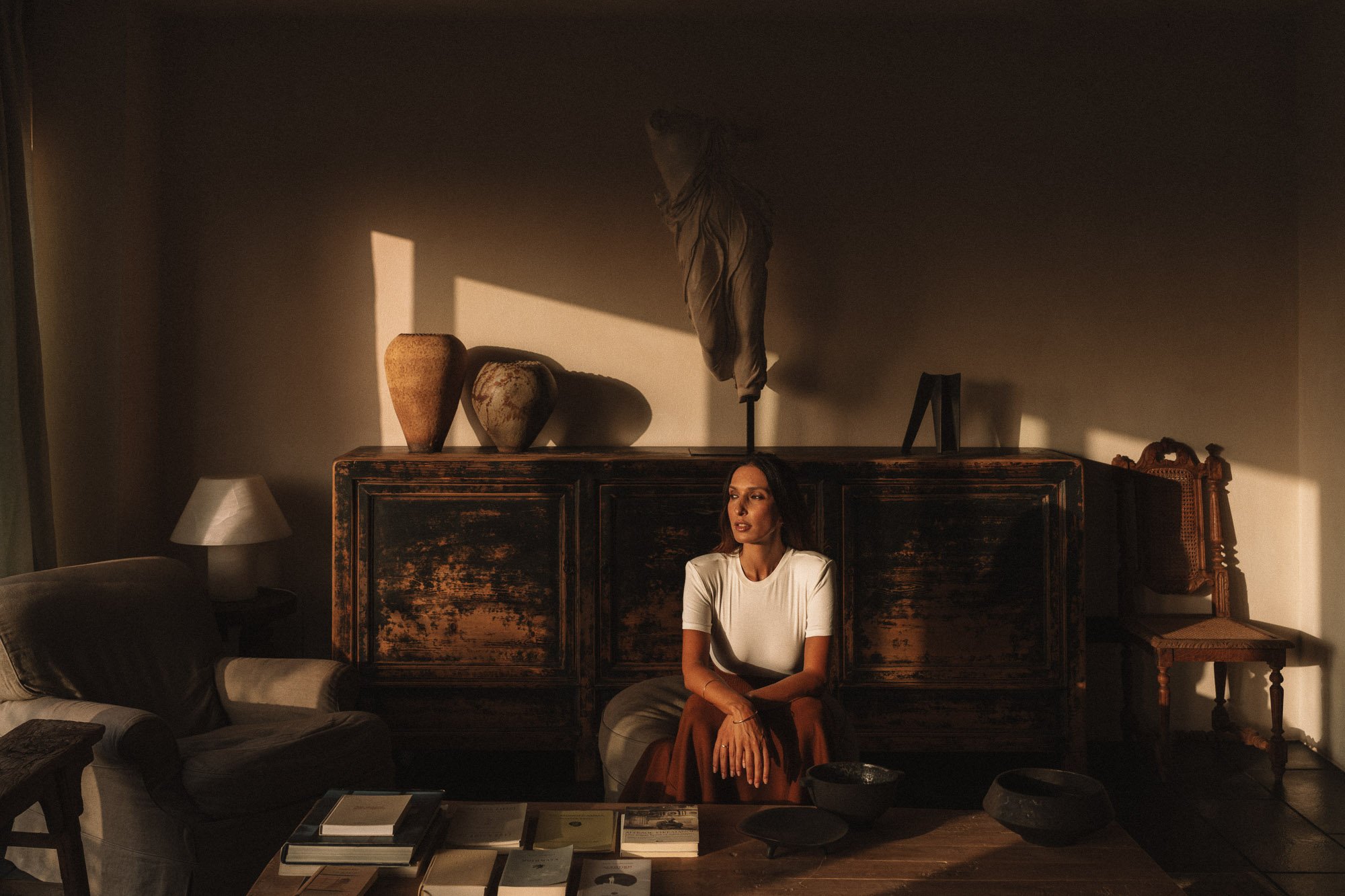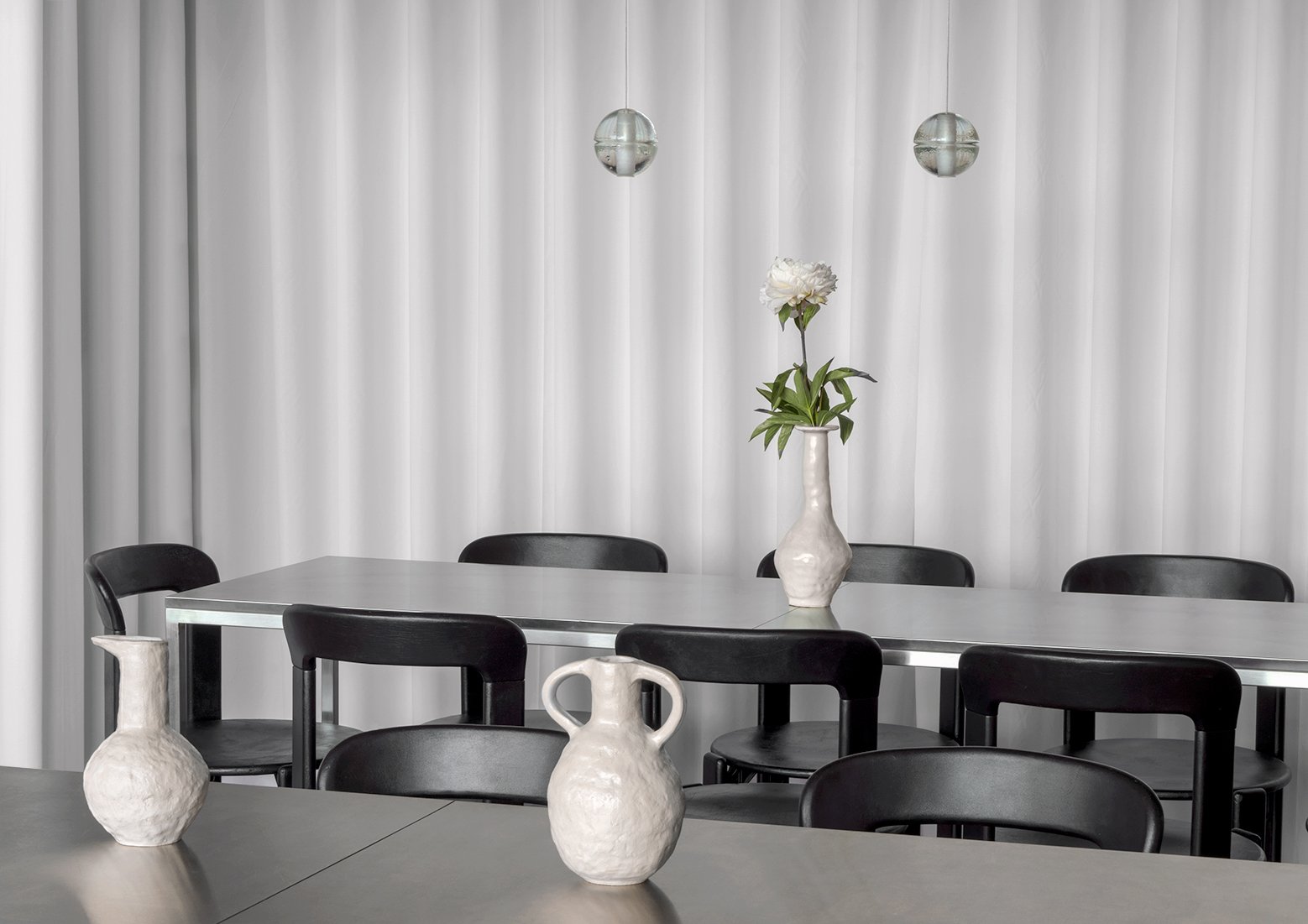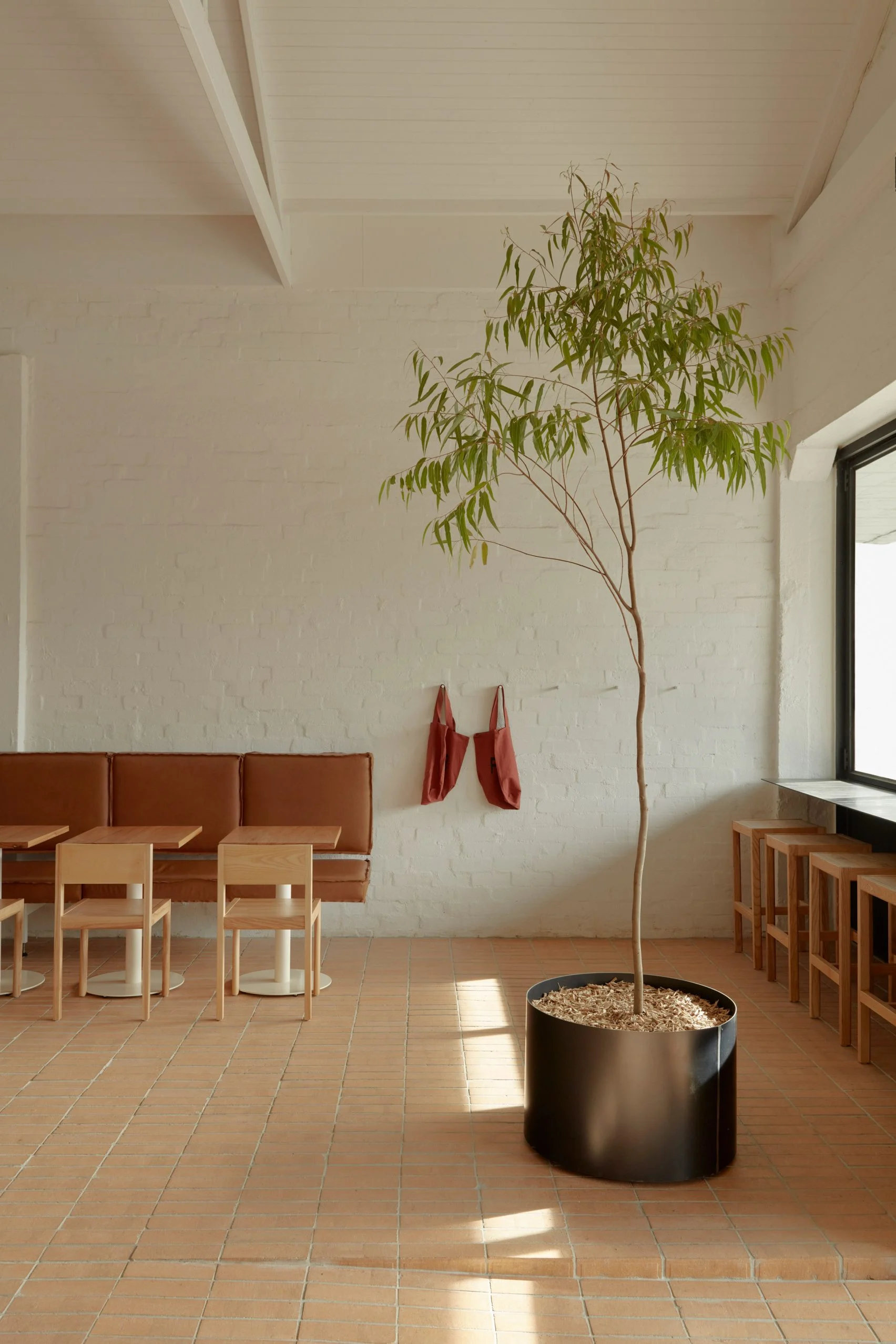In the early days of the process, a friend brought them three cuttings of Indigo. “We kind of forgot about them,” laughs Purpa. “One day, we came to check it and suddenly, it had grown. We had an expert come and check, and when they validated it, were like, “OK, we’re going to do this now.” While the heavy rainfall in the area suited the Assam indigo plant perfectly, it lacked uninterrupted shade to grow. At the time, Mesdag and Purpa were making and selling naturally dyed T-shirts. They poured the profits of each T-shirt into planting a native tree, from unfurling ferns to Bodhi trees to a bonsai that would evolve into a Banyan.
By the time their house was finished, seven years later, a forest had sprung up to create an ideal ecosystem for their indigo plantation to thrive. Thanks to the site’s natural irrigation system of waterfalls flowing into a duo of dovetailing streams, the forest was fully self-sustaining, needing no extra irrigation or intervention beyond the plant’s harvest. “The beautiful thing about Bali is that when you plant a tree, you know that in 20 years, it’ll be about this big,” says Mesdag. “You can create your dream in this lifetime.”
That dream is now shared through TianTaru’s workshops, which are highly personal, hands-on, and primarily an exercise in patience. Uncompromising in their refusal to cut corners, Mesdag and Purpa understand that indigo dyeing is a process that can’t be rushed. As individuals or in groups of two, guests are invited to experience its rhythms for themselves by following the entire indigo lifecycle.
“We start off with the harvest, then we teach our guests how to extract the dye and make the Indigo paste. Then we teach them how to make an indigo vat using only sugar and limestone. So we give them the recipe, then we give them a cloth to dye,” explains Mesdag. They’re also invited to bring a personal item to dye too, in an opportunity to give a new life to an old garment. “We teach them how to do the finishing, and we give them a plant.”
Over the course of two or more days, guests become part of the family, sharing meals prepared from fresh herbs and coconuts harvested from the garden. At night, they sleep on a futon in the open-air guest house that doubles as a yoga studio and a sorting room for freshly harvested indigo leaves. As custodians of a fading art form, transparency is central to TianTaru’s philosophy. “We share all the information we have; we don’t keep anything to ourselves. Our idea is that people can go home and they can create their own studio,” says Mesdag. “Previously, indigo was a secret. No-one would share their recipe, because it’s your trade, and if you show the neighbor, then you lose your custom. Now, we’re getting to the point where we need to share information. Though even if I give you all my information, it’s not going to be the same. Maybe your earth is different. Depending on where you are, the climate—everything—will change your vat.”














